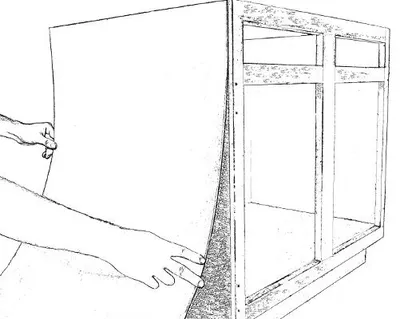Worried about getting your tile adhesive thickness just right? Whether too thick or too thin, using the correct adhesive depth can make or break your tiling project.
Understanding Tile Adhesive Basics
Tile adhesive is the crucial bonding agent that ensures your tiles stay firmly in place for years to come. The thickness of this adhesive layer plays a vital role in the overall success of your tiling project. Modern tile adhesives are specifically engineered to provide optimal bonding strength when applied at the correct thickness. Too thin, and you risk insufficient coverage and weak bonds; too thick, and you could face issues with curing time and stability. Most standard cement-based adhesives are designed to work within a specific thickness range of 3mm to 6mm after tile placement. Understanding these basics is essential before starting any tiling project, as proper adhesive application directly impacts the longevity and stability of your tiled surface.
Standard Tile Adhesive Thickness Guidelines
For most residential and commercial tiling projects, there are well-established guidelines for adhesive thickness. For thin-bed applications on relatively flat surfaces, aim for a final adhesive thickness of approximately 3mm after the tile is bedded. This is ideal for wall tiles and smaller floor tiles in well-prepared areas. For thick-bed applications on more uneven surfaces, the adhesive can be applied between 3-12mm thick. Some specialized rapid-setting adhesives can accommodate even greater depths, up to 20-25mm in isolated areas where necessary. However, it’s crucial to note that these are maximum recommendations, and the ideal thickness often falls within the lower ranges for most applications.
Factors Affecting Adhesive Thickness
- Tile Size and Weight: Larger and heavier tiles typically require thicker adhesive beds to ensure proper support and levelling
- Substrate Condition: Uneven surfaces may need thicker application to achieve a level finish
- Environment: Indoor vs outdoor installation can affect required thickness due to exposure to elements
- Traffic Load: Areas with heavy foot traffic may need specific adhesive thickness for optimal durability
- Adhesive Type: Different formulations have varying recommended thickness ranges
Choosing the Right Trowel Size
The notch size of your trowel directly correlates to the final adhesive thickness. As a general rule, the final adhesive thickness will be approximately half the depth of your trowel’s notches. For example, a 12mm notched trowel typically results in a final bed thickness of about 6mm after the tile is pressed into place. For standard wall tiles, a 6mm notched trowel is often sufficient, while floor tiles might require 8-10mm notches. Large format tiles typically need a 12mm notched trowel to ensure adequate coverage and support.
Special Considerations for Large Format Tiles
Large format tiles (400mm x 400mm or larger) require special attention to adhesive application. These tiles need a minimum of 12mm notched trowel and often require back-buttering – applying additional adhesive to the back of the tile before placement. This technique ensures complete coverage and prevents hollow spots that could lead to cracking. The final adhesive thickness for large format tiles should typically be between 6-12mm after bedding, depending on the specific tile size and weight. It’s crucial to achieve at least 95% adhesive coverage for these larger tiles to ensure proper bonding and support.
Common Mistakes to Avoid
- Over-Trowelling: Applying excessive adhesive that exceeds manufacturer recommendations
- Inadequate Coverage: Not achieving the minimum required coverage percentage
- Incorrect Trowel Selection: Using inappropriate notch sizes for the tile type
- Skipping Back-Buttering: Not applying additional adhesive to large format tiles
- Ignoring Setting Time: Not allowing proper curing time between application and grouting
Professional Installation Tips
For optimal results, start with a clean, level substrate and ensure proper mixing of the adhesive to manufacturer specifications. Always work in small areas of about 1m² at a time to prevent the adhesive from skinning over. Apply adhesive with your notched trowel at a 45-degree angle to achieve consistent coverage. For wall tiles, apply horizontal lines of adhesive to prevent trapped air pockets. Regularly check adhesive coverage by lifting newly placed tiles to ensure proper contact. Remember that temperature and humidity can affect working time, so adjust your working area accordingly.
When to Seek Professional Help
While many tiling projects can be successful DIY endeavours, certain situations warrant professional assistance. Consider hiring a professional tiler when dealing with:
- Large format tiles exceeding 600mm x 600mm
- Significantly uneven substrates requiring extensive preparation
- Complex patterns or designs requiring precise cuts
- Wet areas like shower enclosures where waterproofing is crucial
- Commercial installations with specific performance requirements
Final Thoughts and Recommendations
Success in tiling projects largely depends on proper adhesive application thickness. Always consult manufacturer guidelines for specific products, as recommendations can vary. Remember that most standard installations require a final adhesive thickness between 3-6mm, while special applications may need up to 12mm or more. When in doubt, it’s better to seek professional advice than risk a failed installation. Regular maintenance and proper installation techniques will ensure your tiled surface remains beautiful and functional for years to come.
FAQ
How thick is too thick for mortar?
TCNA Method F103B-21: Under the requirements section, it lists mortar bed thickness 1-1/4″ minimum to 2″ maximum.
Is thinset as strong as concrete?
While thinset is technically a modified mortar, it’s thinner and designed specifically for tiles, unlike mortar which is thick and holds stacked bricks in place. Likewise, thinset contains cement, but its formula lacks the strength to build walls or even serve as a stand-alone flooring product.
Why is my thinset crumbling?
If you let grout or thinset dry out as they are trying to harden, they simply won’t harden very well, and then they will be crumbly and not adhere well to surfaces.
How thick can you put thinset under tile?
The terms thinset cement, thinset mortar, dryset mortar, and drybond mortar are synonymous. This type of cement is designed to adhere well in a thin layer – typically not greater than 3/16th thick. For example, a 3/8″ notch trowel will produce a 3/16th inch thick coating after the tiles are pressed in to the cement.
Is tile adhesive as strong as cement?
Rock Cement Resilience:Tile adhesive provides resilience similar to rock cement, surpassing the limitations of using cement alone. Cost-Effective:The predetermined composition of tile adhesive makes it a cost-effective choice compared to the intricate process of blending various components for cement mixtures.
Sources
[1] https://www.stonesuperstore.co.uk/advice/tile-installation/how-much-tile-adhesive-do-i-need
[2] https://tal.co.za/bed-thickness-explained
[3] https://constructionchemicals.com.au/wp-content/uploads/2019/01/tile-fixing-guide-dec18.pdf



